| |||||||
| Search Forums |
| Advanced Search |
| Go to Page... |
 |
| Search this Thread |  240,243 views |
| | #1 |
| Distinguished - BHPian  | Guidelines & Tips for Safe Driving in FOG  For those who have experienced it, driving in fog is THE toughest weather condition to drive in. The best of drivers quail when faced with dense fog, and for a novice, being surrounded by fog with visibility reduced to less than 50 metres is a situation that can cause panic attacks. Here we outline certain do's and don'ts to get you home safe through the fog. Must-Read Articles: This article will be divided into 6 parts:The links above may be used to jump to the relevant post within this thread. Last edited by Technocrat : 11th March 2013 at 22:13. Reason: New Point Added |
| |  (33)
Thanks (33)
Thanks
|
| The following 33 BHPians Thank SS-Traveller for this useful post: | .anshuman, A M, airfoil, BlackPearl, digitalnirvana, ghodlur, GTO, jaysheth, JoseVijay, Lij, Lobogris, Nonstop-driver, parsh, Prowler, pulsar56, R2D2, Rehaan, rulerofsun, SDP, shancz, Sheel, Simple_car, Speed.Demon, SR-71, suresheadala, swiftnfurious, theexperthand, thoma, v&v, vb-saan, vivekkp, YaeJay, zenren |
| |
| | #2 |
| Distinguished - BHPian  | So what is fog? It's just a thick cloud of water droplets suspended in the atmosphere at or near the earth's surface. Since these droplets scatter the light that should have been directly transmitted to our eyes, we are unable to see as far as we should have on a clear day (or night). In addition, whatever object we can see, is severely reduced in CONTRAST, making the object we see through the fog to be fainter and more indistinct. How much contrast is lost depends on
Our brain suffers from a certain amount of loss of perception as a result of this loss of contrast in the images it receives from the eyes. The primary effect is loss of perception of motion - as a result, we tend to judge motion to be slower or faster than it actually is, and/or fail to distinguish between a moving and stationary object (eg. a stopped car ahead of us can be perceived to be moving, or vice-versa). Our own perception of the speed we are travelling at, is also reduced in fog. At high speeds on a clear day, our peripheral vision tells us how fast we are crossing a stationary object on the side of the road, without our needing to check the speedometer. In dense fog, this feedback mechanism reduces or ceases to exist. In addition, our judgment of distances is also severely hampered in fog. A phenomenon called aerial perspective, causes us to perceive objects which are low contrast and indistinct as being farther away. We learn this because of an environmental regularity: light from distant objects, such as mountains that are far away, appear hazy/foggy, while the brain interprets closer objects to be clearer. The Mandelbaum Effect also comes into play when staring into fog. "Accommodation" is the physiological process by which the eye brings objects of different distances into sharp focus. Fog causes the eye to mis-accommodate, resulting in blurred vision for more distant objects - the tendency of the eye is to approach "resting" accommodation under conditions of poor visibility. Since the focal length of resting accommodation is relatively short, a little over three feet, objects down the road will be out of focus, because our brains tell our eyes not to bother focusing that far away! Last edited by Rehaan : 24th January 2013 at 21:35. |
| |  (33)
Thanks (33)
Thanks
|
| The following 33 BHPians Thank SS-Traveller for this useful post: | .anshuman, BlackPearl, chaitanyakrish, dhanushs, gearedup, ghodlur, Grand Drive, GTO, Guna, jaysheth, JoseVijay, Leoshashi, Lij, lloydofcochin, mallumowgli, Nonstop-driver, PapaBravo, parsh, PSG, Rehaan, sayakc, SDP, shashank.nk, Sheel, Simple_car, suresheadala, Sutripta, swiftnfurious, T2luvroads, theexperthand, vb-saan, vinya_jag, vkaul1 |
| | #3 |
| Distinguished - BHPian  | 2. Equipping yourself to drive safely in fog The primary requirements when you venture out to drive into fog are:
Run through the following list to ensure you are well prepared: Windshields & mirrors: Make sure your front and rear windshields as well as all window glasses and ORVMs are cleaned and polished to a perfect streak-free state. Once you are in fog, it is probably too late to stop to clean them on the road - the risk of someone ramming into you if you are wrongly parked is rather high. I use a solution called Lenshine, which is a proprietary lens cleaner for spectacles, to clean the inside surfaces of my windshields. Products like Rain-X can also be used. Wipers: Make sure your wiper blades do not streak / skip and leave marks on the glass when used with windshield washer fluid. Washer fluid: Check that the windshield washer tank is topped up with either a proprietary washer fluid, or a concoction of soap and water. The soap is required to break down grease and dirt. I prefer to use drinking water into which I add about 10 ml of dish-washing liquid soap like Pril. Eyewear: Your spectacles (especially if you use prescription lenses) should not have tinted/polarized/photochromatic lenses. With visibility already severely compromised in fog, you don't want to make it worse by allowing your eyewear to reduce whatever little light reaches your eye. Make sure that the lenses are also sparkling clean. Fog lamps: If your car is equipped with front and rear fog lamps, make sure these work. In case fog lamps are not supplied as OE with the car, it would be a good idea to install them ASAP if you live in fog-prone zones like North India. Ensure that all of your indicator lamps are functioning as well. Torch: Keep a powerful torch in the car. It can be used for signaling, and also when you need to survey the road ahead that you can't view from the car at night. Check that the batteries have sufficient charge remaining. Rules and regulations governing use of fog lamps: Must read: 1. Fog lamps? What use are they? 2. How to use fog lamps 3. There's no fog, but can I use fog lamps? 4. About rear fog lamps This is India, and our rules are there to be broken, on the excuse that one does not know what rules apply! Fitment of front and rear fog lamps is optional according to our rules, and this is what is mentioned: The rules governing the use of fog lamps are clarified internationally, and restrictions on their use are listed below: On behalf of Team-BHP, I make an earnest request to all drivers: Please do not use fog lamps in clear weather conditions, and/or in any manner that distresses other drivers on the road. DO NOT use your hazard lights in reduced visibility conditions while driving. Use them only when your vehicle is stopped, regardless of the weather conditions. The purpose of these flashing lights is to warn other drivers about the existence of your vehicle as a hazard to others driving past it, OR to warn others of a hazard ahead that you can see, but which may not be visible to them. Also read: Avoid using hazard lights during fog. In the situation that you have a car that is not equipped with fog lamps (and you do not wish to spend the paltry sum required to fix fog lamps anytime in the future), but you are travelling on a fog-bound road, you can switch on your hazard lights, only until you are sure that a vehicle coming up behind you has noticed you and slowed down sufficiently. Under no circumstance should you continue to use hazard lights while another car is continuously following you. This may lead to "moth-effect", especially at night, and your vehicle would be the worse off if the vehicle behind you just happens to be a truck with an inebriated driver at the wheel (inebriated drivers suffer from greater "moth effect"). Also read: 'The moth effect' endangers motorists. In addition, if you incorrectly activate your hazard lights, you are handicapped in your ability to signal your intention to turn and / or make lane changes. Last edited by Rehaan : 24th January 2013 at 21:35. |
| |  (24)
Thanks (24)
Thanks
|
| The following 24 BHPians Thank SS-Traveller for this useful post: | .anshuman, achopraa, alpha1, BlackPearl, espraveen, GTO, Guna, jaysheth, JoseVijay, Lij, lloydofcochin, MaheshY1, Nonstop-driver, parsh, Rehaan, rishie, SDP, shashank.nk, Simple_car, suresheadala, swiftnfurious, tasuray, theexperthand, vb-saan |
| | #4 |
| Distinguished - BHPian  | Urban Areas: • Rule #1: SLOW DOWN. You do NOT have to match the maximum speed limit in fog. Driving at 30 km/h in a 50 km/h zone is not a crime. However, ensure you do not slow down too much, as that makes your vehicle more likely to get rear-ended by a much faster moving vehicle in these poor visibility conditions. Still, going slow and being rear ended is safer than going fast and hitting a pedestrian or solid obstacle that you didn't see up ahead. Highways: • Rule #1: Estimate the visibility range. Reassess constantly. You need to slow down and assess how far you can see an object that is not showing any lights in the fog. A tree trunk on the side of the road, or a parked truck with its lights off - gauge the distance at which you can manage to make out the obstruction. This distance can be considered the maximum braking distance you have, and will consequently determine your speed on the highway (I normally convert every 2 metres of visilbility to every km/h of speed - so a visibility range of 50m means a max speed of 25 km/h). Last edited by Rehaan : 25th January 2013 at 11:11. |
| |  (23)
Thanks (23)
Thanks
|
| The following 23 BHPians Thank SS-Traveller for this useful post: | BlackPearl, devsoftech, espraveen, GTO, jaysheth, JoseVijay, Lij, lloydofcochin, Nonstop-driver, parsh, Rehaan, sayakc, SDP, shashank.nk, Sheel, Simple_car, strawhat, suresheadala, swiftnfurious, T2luvroads, theexperthand, thoma, vb-saan |
| | #5 |
| Distinguished - BHPian  | Urban Areas: • It is much easier to drive on a well-lit city road in dense fog, than it is on the dark highway. The yellow high mast sodium vapour lamps that are commonly used in our cities help to improve visibility as well as minimize glare. Highways: • If you haven't driven in fog at night on the highway accompanied by an experienced person previously, avoid doing this unless it's a national emergency! Even then, remember that it is THE most hazardous type of driving. Last edited by Rehaan : 24th January 2013 at 21:34. |
| |  (25)
Thanks (25)
Thanks
|
| The following 25 BHPians Thank SS-Traveller for this useful post: | ashpalio, BlackPearl, coolboy007, espraveen, ghodlur, GTO, Guna, ike, JoseVijay, lancer_maniac, Lij, lloydofcochin, Nonstop-driver, parsh, Prafful_Rathod, Rehaan, SDP, Sheel, Simple_car, Speed.Demon, strawhat, suresheadala, Tgo, theexperthand, vb-saan |
| | #6 |
| Distinguished - BHPian  | 5. Some general tips and tricks • Fog density can vary suddenly. Be very watchful. • Always run the AC and front (and rear, if so equipped) defoggers at all times in fog. Forget about FE! • Moisture and dirt buildup on the outside of your windscreens will be gradual, while you imagine that fog is becoming more dense. Run the wash-wipe at regular intervals of a minute or two. Now you know why the wipers should be good and the washer bottle full before you venture out into fog! • Keep your window wound down partially. It has two advantages: • You can hear better when other cars are honking around you. Fog deadens sound and make them appear to come from far away.• Don't keep staring straight into the fog ahead, hoping to sight any obstruction instantaneously. The Mandelbaum Effect we talked about earlier, will set in, and your eyes will adjust focus onto the edge of your bonnet. Instead: • Make a conscious effort to look around to the left and right• Use the painted line on the left edge of the road as a guide if you are having trouble following the road ahead. • If you are forced to follow another vehicle which has its hazard lights on in fog, try not to stick to the same lane behind him. It may be risky to pull out and overtake him, but at least you can drive in the adjacent lane at a safe distance - this will reduce the dazzle to your eyes, and you are less likely to run into his rear bumper if he brakes or changes lanes suddenly. • Yellow plastic stuck on your fog lamps or headlamps is useless. So are yellow bulbs. Been there, done that, and enough research has been done to prove that doing this has no proven advantages. Read this article as further proof. • Do not wipe the inside surface of your front windscreen with your bare palm. The sweat and oils on your skin will streak the glass, and it will fog up more rapidly as well as scatter the light of oncoming cars. Use the defogger with AC to prevent moisture buildup. If you already have moisture deposit on the inside, use a microfibre cloth, old newspaper, paper tissue or a clean & dry handkerchief to clean the moisture in unidirectional strokes. Avoid circular rubbing on the glass surface - this makes oncoming headlights dazzle you more. • After wash-wipe sequence, run the wipers without washer fluid for a few times. This will ensure the glass is clean and dry, and will not "flare" the light from car headlights approaching you. • Keep your GPS device turned on ONLY IF you are sure that the area is well-mapped as per your device. Keeping the GPS running helps to predict upcoming curves and turns that you might miss in the fog, both in the city and on highways. On the other hand, a bad map can guide you onto non-existent roads & bridges, or roads that have been recently realigned, and the consequences can be disastrous in fog. • If you are unfortunate enough to have been involved in a multi-car highway pileup in dense fog, don't jump out of the car and run across the road. Remain in the car and turn on your hazard lights. After that, make sure you can open the door(s) and get out without getting run over, then leave the car to go to a safer spot. Your car's bodyshell is usually strong enough to offer you better protection if another car hits you again, rather than when you are on foot. • Above all else, have patience and keep a cool head. Panic and road rage don't make the fog go away. Even if you cannot see the road, it's still there. It's just that you have to calmly find it and stay on it. To conclude, driving in fog may not be entirely avoidable for people who live in North India and cannot stop going to work just because it is winter-time. At the same time, adequate precautions and conscious actions must be the order of the day when driving in fog, mainly because the natural & subconscious instincts that we use to drive on a clear day (or night), do not work well when driving in fog. Drive safe, unless you can avoid driving in fog! Last edited by Rehaan : 24th January 2013 at 21:38. |
| |  (39)
Thanks (39)
Thanks
|
| The following 39 BHPians Thank SS-Traveller for this useful post: | akshay87kumar, ampere, Arun.K, ashpalio, BlackPearl, devilwearsprada, EFF-EIGHT-BEE, espraveen, gearedup, ghodlur, GTO, InControl, jaysheth, JoseVijay, Leoshashi, Lij, lloydofcochin, mac187, midazolam, nair, NG_EV, nkrishnap, Nonstop-driver, parsh, phamilyman, Rehaan, Risky4327, Rshrey22, samarjitdhar, sayakc, Sheel, Simple_car, Speed.Demon, SPIKE ARRESTOR, strawhat, suresheadala, theexperthand, vb-saan, vinya_jag |
| | #7 |
| Team-BHP Support  Join Date: Feb 2004 Location: Bombay
Posts: 24,198
Thanked: 36,138 Times
| re: Guidelines & Tips for Safe Driving in FOG Superb article SS-Traveller! There was tons of interesting information in there, especially with regards to sight & sound in fog. Thanks a millions for taking the time to share this. Two things i wanted to add: 1) Fog lights are usually placed fairly low. This enables them to light up maximum road and minimum fog. When you light up fog, most of what it does is scatter and reflect light causing glare. I've also heard that in some situations, fog is less dense just at ground level (perhaps the temperature of the earth has some part to play in this?). I can't find any solid back-up for this statement though. 2) Here are 3 screen-grabs from a video I have of me driving in very mild fog at night. Each picture is virtually the same location with low-beams (on the left image) and high-beams (on the right image). This helps illustrate why high-beams should be avoided: Notice how much of the high-beam reflects back as glare  The glare kills the visibility of whats beyond it. Look at the green shrubs that are at the base of the signpost in both images to compare  Once again, high-beam glare on the right prevents you from seeing as far into the distance  cya R Last edited by Rehaan : 29th January 2013 at 17:54. |
| |  (46)
Thanks (46)
Thanks
|
| The following 46 BHPians Thank Rehaan for this useful post: | .anshuman, 100kmph, aalokg, Amarjeetphukan, ampere, anToNIcHeN, ashpalio, AZT, bblost, BlackPearl, chaitanyakrish, devilwearsprada, espraveen, Gannu_1, ghodlur, GTO, Guna, jaysheth, JoseVijay, knightrider_7, Leoshashi, Lij, Lobogris, LP640, maximus., Mu009, NG_EV, Nonstop-driver, parsh, phamilyman, pkk_84, raveesh_k, Rohit Manohar, rulerofsun, SDP, shancz, Sheel, Simple_car, SR-71, SS-Traveller, strawhat, suresheadala, theexperthand, thoma, vb-saan, zenren |
| | #8 | ||||
| Distinguished - BHPian  | re: Guidelines & Tips for Safe Driving in FOG Quote:
Quote:
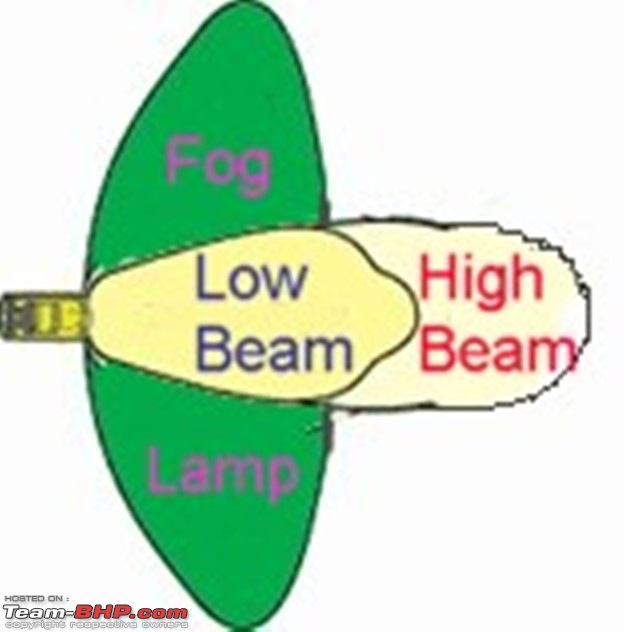 ...where it is obvious that the fog lamps have a widely spread out and not far-reaching beam pattern, which tends not to be reflected back by the fog into our eyes - hence, we can see the surface of the road close to the car better in fog. But this does not allow us to drive very fast, since the reach of the lights is not at all good. A good resource to learn more about fog lamps and their design & limitations: http://www.danielsternlighting.com/t...fog_lamps.html. Quote:
Quote:
 That's a perfect set of illustrations! (Exactly what the doctor ordered... That's a perfect set of illustrations! (Exactly what the doctor ordered...  ) )Last edited by SS-Traveller : 24th January 2013 at 23:07. | ||||
| |  (22)
Thanks (22)
Thanks
|
| The following 22 BHPians Thank SS-Traveller for this useful post: | aalokg, ampere, anToNIcHeN, BlackPearl, chaitanyakrish, devilwearsprada, espraveen, JoseVijay, knightrider_7, lloydofcochin, LP640, lsp, NG_EV, Nonstop-driver, parsh, Rehaan, SDP, Simple_car, SR-71, suresheadala, theexperthand, vb-saan |
| | #9 |
| Senior - BHPian Join Date: Jul 2009 Location: Emerging Metro
Posts: 3,351
Thanked: 1,955 Times
| re: Guidelines & Tips for Safe Driving in FOG Very informative post and T Bhp is now a days on the educative mode which will augurs well for the community which learns and follows unnecessary and unwanted elements too quickly. Regarding fog lamps, today fog or no fog, fog lamps always remain on. That is the style followed by almost all, at least in Kerala. Here some suggestions were mooted by some safety committee with regard to keeping the headlamps of two wheelers on during day time to get them noticed by drivers of bigger vehicles as a preventive methodology against accidents.No sooner this news appeared the so called literati started this practice and that too in full blast of the high beam. But luckily that practice ceased. |
| |  (1)
Thanks (1)
Thanks
|
| The following BHPian Thanks rajeev k for this useful post: | BlackPearl |
| | #10 |
| BHPian Join Date: Oct 2012 Location: Mumbai
Posts: 630
Thanked: 429 Times
| re: Guidelines & Tips for Safe Driving in FOG Rehaan, I have experienced the same phenomenon. Once I was in Lonavala at around 3 am and it was the densest fog i have ever come across at night. It was also my 1st fog encounter while driving. When my beam was low I could manage well to drive and as I switched to high beam I noticed that my light itself reflected more from the water particles and blinded myself. Very helpful article SS-Traveller. Thank You Sir. -Bhargav |
| |  (3)
Thanks (3)
Thanks
|
| The following 3 BHPians Thank Octane_Power for this useful post: | AZT, chaitanyakrish, SS-Traveller |
| | #11 |
| BHPian | re: Guidelines & Tips for Safe Driving in FOG Thank you SS-Traveller Sir for this piece! Now of course I can point my office guys to the thread for reference. Alas, that I did searched Traffic Police web-sites for such advisory and couldn't find anything on the Delhi Traffic Police site. They don't say anything, neither in support, nor aginst it. The only place I can find this, where they advise against using hazard light in foggy weather is the Chandigarh Traffic Police Website (http://www.chandigarhtrafficpolice.o...ing_in_fog.php). Kudos to them!  |
| |  (2)
Thanks (2)
Thanks
|
| The following 2 BHPians Thank Nonstop-driver for this useful post: | Rehaan, SS-Traveller |
| |
| | #12 |
| Team-BHP Support  | re: Guidelines & Tips for Safe Driving in FOG Truly a bible for those who frequently drive in fog. Thanks for sharing SS-Traveller. Your driving experience just shines through this article. Luckily, we don't face foggy driving conditions in Mumbai. It's only when you visit hill stations like Mahabaleshwar that you encounter fog in our neck of the woods. I learned a lot from your article this morning. Our Advice articles are comprehensive (as yours has proven) and they do take time to read & understand. But knowledge & practice is what separates good drivers from the bad  |
| |  (4)
Thanks (4)
Thanks
|
| The following 4 BHPians Thank GTO for this useful post: | parsh, SDP, SS-Traveller, vb-saan |
| | #13 |
| Team-BHP Support  | re: Guidelines & Tips for Safe Driving in FOG A very useful well written article. A couple of points RainX, I would avoid on windscreen since it causes the wipers to smear in my experience Washing up liquid in the washer bottle - Use very little or avoid since it also is slightly abrasive |
| |  (2)
Thanks (2)
Thanks
|
| The following 2 BHPians Thank ajmat for this useful post: | NG_EV, SS-Traveller |
| | #14 |
| Distinguished - BHPian  Join Date: Oct 2008 Location: Pune
Posts: 3,257
Thanked: 5,855 Times
| re: Guidelines & Tips for Safe Driving in FOG Excellent post SS-Traveller. Thanks a lot. It will be most useful for all TBHPians but mostly for those in the north parts of the country and in the mountains where fog and bad visibility are endemic during the winter. |
| |  ()
Thanks ()
Thanks
|
| | #15 |
| Senior - BHPian | re: Guidelines & Tips for Safe Driving in FOG @SS-Traveller/Rehaan,  Truly hats off to you guys for dishing out the informative threads which I believe every driver should be aware of. Fantastically put, every word in the thread carries so much weight when one has to navigate through the foggy weather. Truly hats off to you guys for dishing out the informative threads which I believe every driver should be aware of. Fantastically put, every word in the thread carries so much weight when one has to navigate through the foggy weather. Although some cars do have the front & rear fog lamps (or atleast the slots for the same), they are either not utilized or wasted in the sense some of the lamps have no or broken glass which makes the fog lamps ineffective. How would one rely completely on the Inner rear view mirrors when the outer RVM's are misted due to the fog, is it considered safe to drive with the window's rolled down? How's the road grip in places where heavy fog is witnessed, what should one be careful of? Also since the road signs/direction boards are pretty much invisible during the fog, how does one tackle this? Sorry too many queries. One suggestion to Mods: Compile the recent threads on safe driving and publish them as a handbook. Last edited by GTO : 25th January 2013 at 14:26. Reason: Thanks only to SS-Traveller & Rehaan, and not me |
| |  (5)
Thanks (5)
Thanks
|
| The following 5 BHPians Thank ghodlur for this useful post: | chaitanyakrish, devilwearsprada, JoseVijay, Rehaan, SDP |
 |


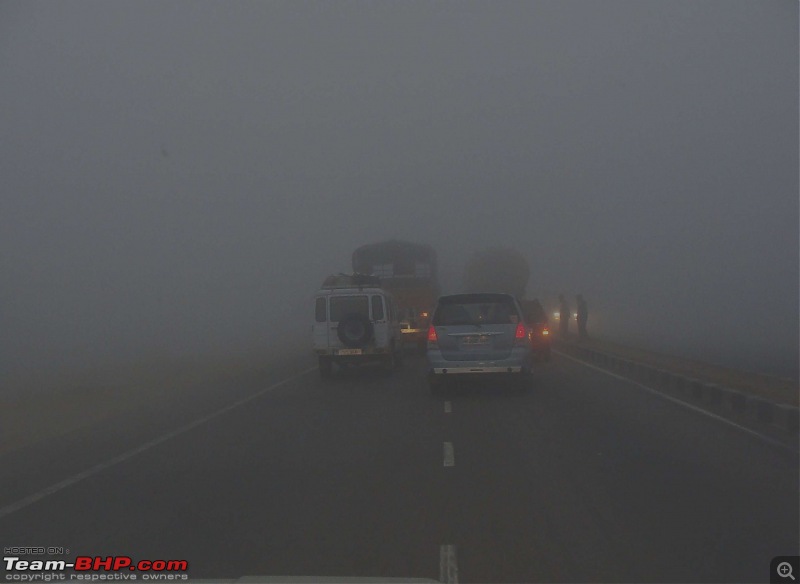

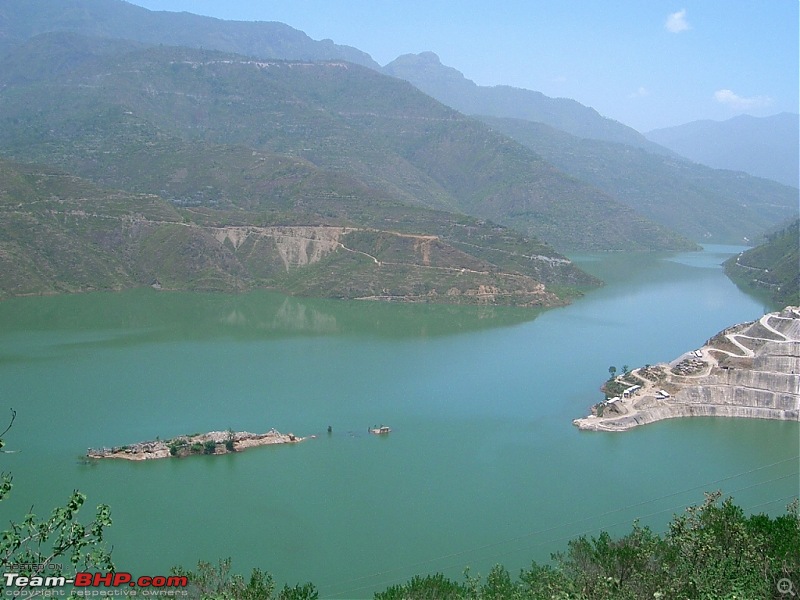


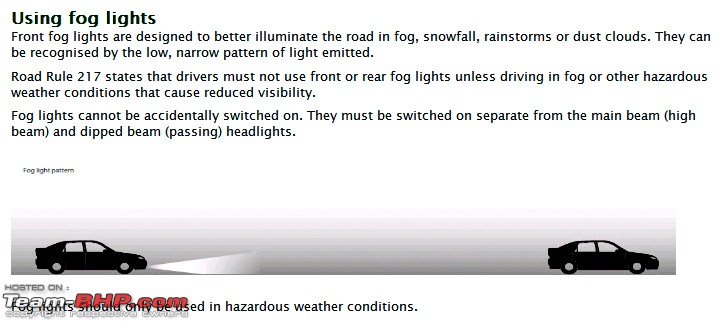
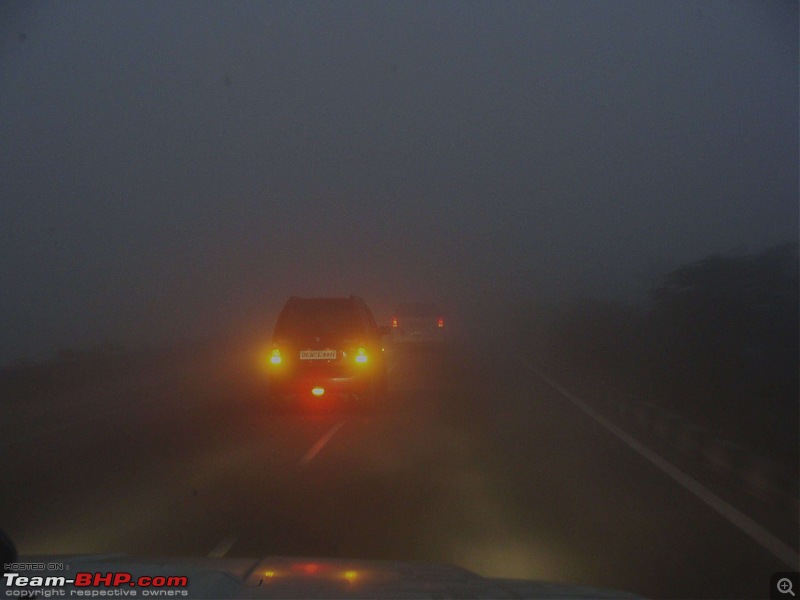

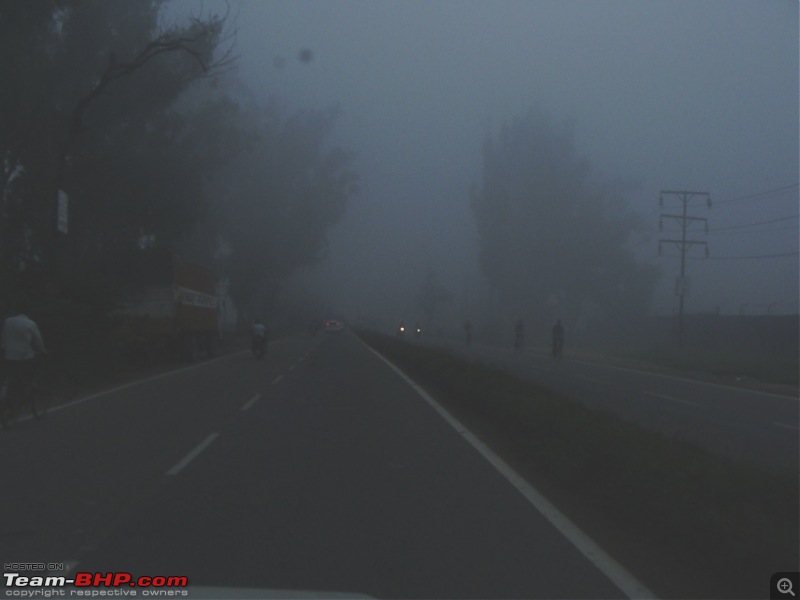


 Or even worse, when he makes a mistake and hits something ahead, you have a chance of taking up residence inside his boot.
Or even worse, when he makes a mistake and hits something ahead, you have a chance of taking up residence inside his boot.